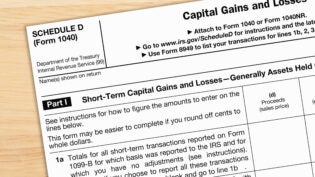A Guide to Small Business Accounting Reports
By: 1800Accountant

We live in the age of “big data,” when businesses are expected to do all sorts of number crunching calisthenics to analyze performance, predict results, and improve on success. The volume of data that financial reporting generates daily can overwhelm many small business owners and send them screaming for the nearest paper shredder.
But amid this sea of data lies some good news: there are only a handful of reports that typically form the core of your business accounting records. Knowing what these are and keeping them up to date can be the first step in getting your finances in order and building future success. Here’s a guide to small business accounting reports.
The Balance Sheet
A balance sheet offers you a thumbnail sketch of what your business has (assets) and what it owes (liabilities) at the end of a specified date. Assets and liabilities combined gives you the equity you have in your business.
For small businesses, assets on balance sheets usually include:
- Bank accounts
- Investment accounts
- Accounts receivable (money you are owed but haven’t yet collected)
- Real property
- Computers and peripherals
- Equipment (like vehicles or machinery)
- Other saleable physical property
- Intangible property(like trademarks, copyrights, and patents)
Liabilities generally include:
- Credit card debt
- Business loans
- Accounts payable (money to owe but haven’t yet paid)
- Anything else your business must pay
Of course, you want your assets to be larger than your liabilities, with the gap between the two growing larger over time. Also, take a close look at your short-term assets (like accounts receivable) versus your short-term liabilities (like accounts payable) to make sure you have enough cash flow to meet your upcoming obligations.
The Income Statement (Profit and Loss)
An income statement, also called a profit and loss statement, shows you your business income and expenditures in much greater detail than the balance sheet. It’s central to any good bookkeeping practice.
Typically, an income statement is broken down by categories of income and loss. This allows you to see, for example, how certain product lines or services are performing in relation to each other. You can then make adjustments to price, offer deals, or make other business and marketing decisions that optimize income.
The income statement also enables you to see where you’re spending lots of money or where you need to spend more. It can help you to determine whether you can cut expenses to streamline spending. It can also be used to compare profit and loss to other recent months or to the same months in prior years.
Accounts Payable Aging
An accounts payable aging report tells you how much your business owes in debt and to whom you owe it. Staying on top of your payables isn’t just polite practice. It’s good business.
When you fail to pay invoices and other debts (like loans or utility bills) on time, you may face penalties and interest that negatively impact your bottom line. Plus, when it comes time to get a new loan, perhaps to expand your business, the lender is going to want to see that you have your payables under control.
Accounts Receivable Aging
Your accounts receivable aging report tracks money owed to your business. If customers or clients wait too long to pay you, you may be faced with a cash flow problem that makes it harder for you to keep your business afloat.
Having a clear collections protocol in place can help to ensure your invoices are paid on time or that, if they aren’t, you can collect interest. Watch for customers or clients who habitually pay late or for ones who are beginning to rack up large balances. Be careful, though, that you don’t lose good customers by being too demanding early in the collection process.
Revenue (By Customer or Client)
Repeat business can be the building blocks of any successful business. A revenue report, broken out by customer or client, can tell you who your biggest sources of income are. You may want to give those folks a little extra TLC.
Diversification is also key to thriving businesses. Make sure you’re not relying too much on only a handful of clients or customers. Your revenue report can show you if you are.
Small business accounting software can make financial reports easier. Even better, a knowledgeable accountant or bookkeeper can help you structure and compile meaningful business accounting reports. You may find that a little assistance can go a long way toward giving you the data you need to succeed.












